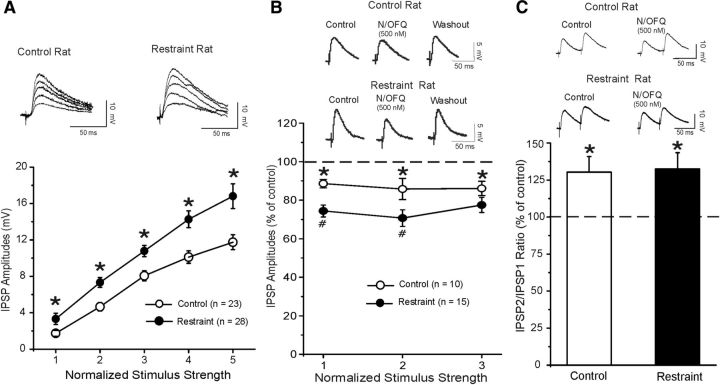Figure 1.
A, Central amygdala basal GABAergic transmission is enhanced in restraint rats compared with control unrestraint rats. Top, Representative evoked CeA GABAA IPSPs from the input–output curves generated in control and restraint rats. Bottom, Input–output curves of mean GABAA IPSP amplitudes. The IPSPs are larger in restraint rats using five equivalent stimulus intensities. The mean baseline GABAergic transmission is significantly increased in slices from restraint rats (n = 21) compared with unrestraint rats (n = 17): *p < 0.05 (unpaired t test). B, Top, Representative evoked CeA IPSPs from control and restraint rats during the control, 500 nm N/OFQ application and washout. Bottom, A total of 500 nm N/OFQ significantly (*p < 0.05) decreases the mean IPSP amplitudes of evoked IPSP over the middle three stimulus strength intensities tested. The N/OFQ-induced inhibition of IPSP amplitudes is larger (#p < 0.05) in CeA of restraint compared with unrestraint rats. C, Top, Representative PPF of evoked CeA IPSPs from control and restraint rats during control and 500 nm N/OFQ application. Bottom, Histograms representing percentage increase in mean ± SEM PPF ratios of IPSPs using 50 ms interstimulus interval in CeA of control and restraint rats. N/OFQ significantly increased the PPF ratio in both groups: *p < 0.05 (paired t test).

